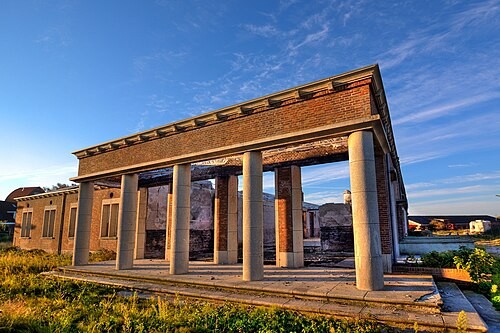Strategically located near the naval city of Den Helder, Huisduinen was of great importance within the Atlantic Wall. Because of this, many German officers and soldiers were stationed there. In 1942, a new lodging and administrative building was constructed for naval officers in a neo-classical style. Due to its architectural design, rumors circulated that it had been designed by Albert Speer, Hitler’s chief architect, though this has never been proven. The building housed offices, a canteen, and living quarters for the officers.
After the liberation, the building was used for many years by the Dutch army and navy. When it was vacated in 1992, part of the complex briefly served as a studio for artist Ruud van de Wint. In 1997, it was designated a national monument to protect it from decay — as it had become a popular hangout spot for local youth.
In 2001, the Stichting Stelling Den Helder foundation began working on plans to give the site a new purpose. However, progress was slow, and in 2009, a deliberately set fire destroyed much of the building’s interior and roof.
Despite the loss, the fire also presented an opportunity for restoration and renewal. Through the collaboration of several organizations, the monument was rebuilt and transformed into a museum.
On May 23, 2019, the Atlantikwall Centre officially opened its doors. The museum provides extensive information about the construction of the Atlantic Wall and wartime life in Den Helder. It tells the story not only of German engineers and soldiers but also of Dutch eyewitnesses. Visitors can also find references to nearby bunkers, which can be explored as part of the museum experience.
